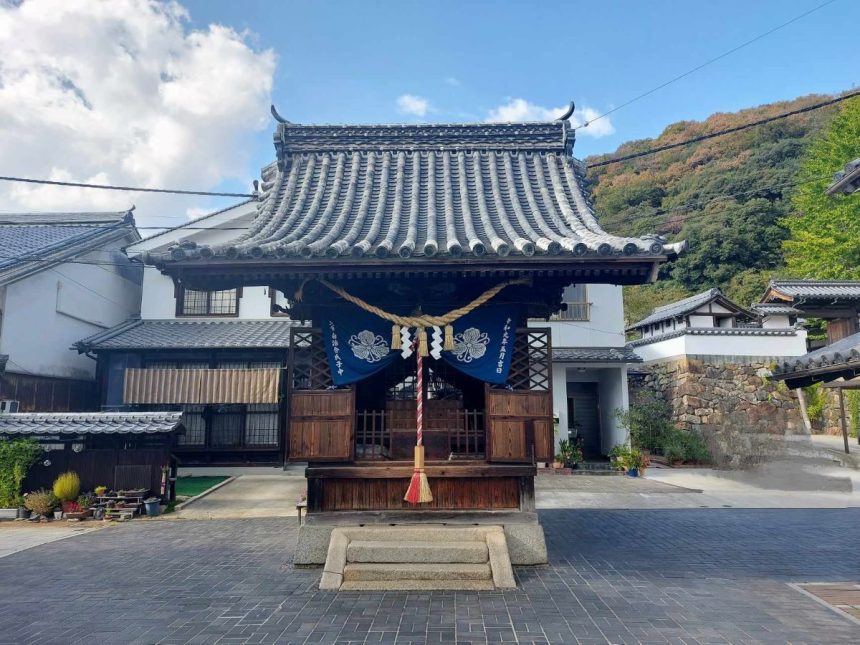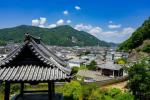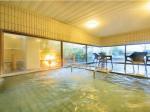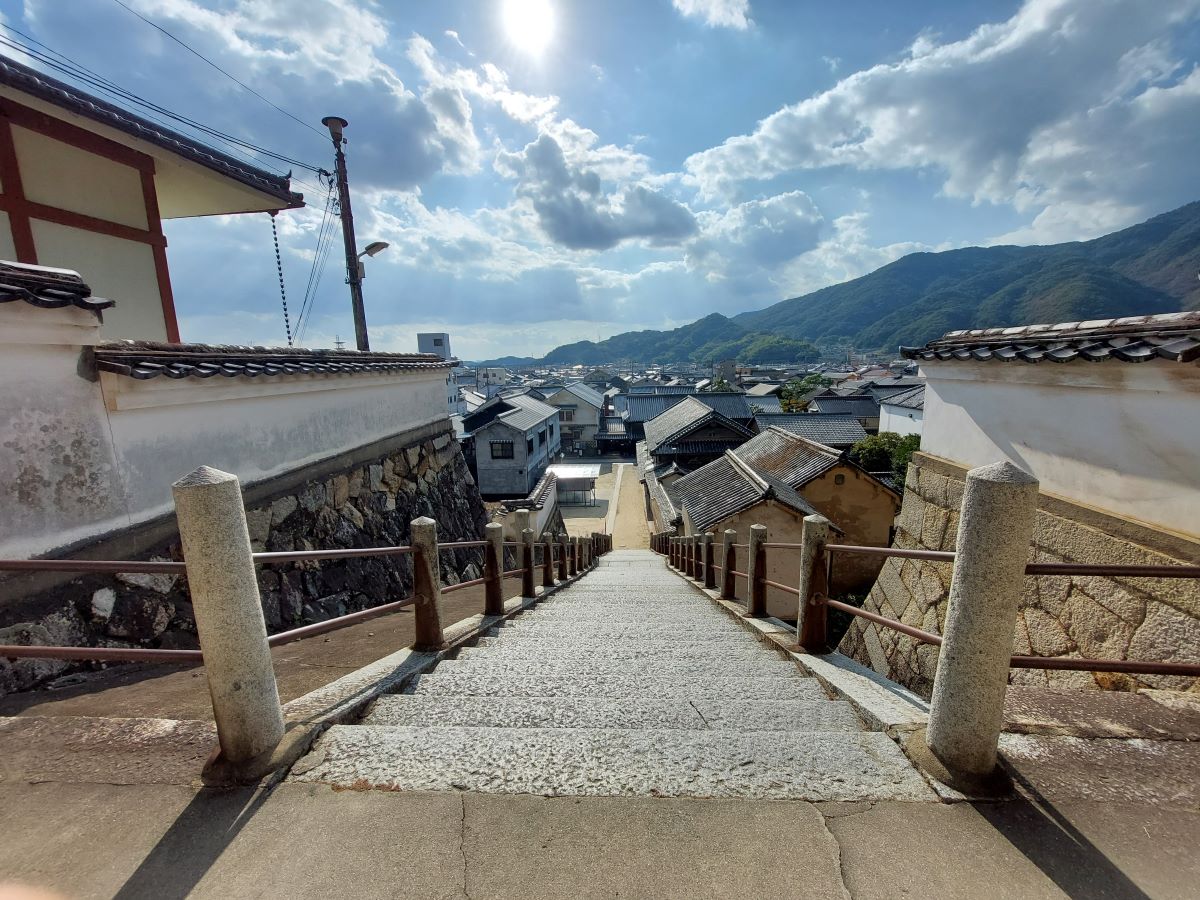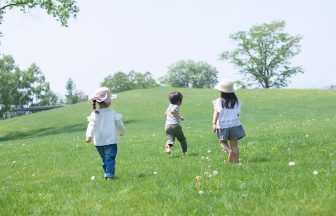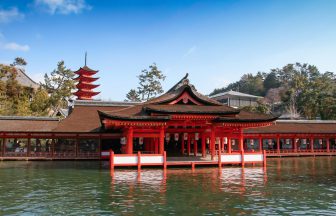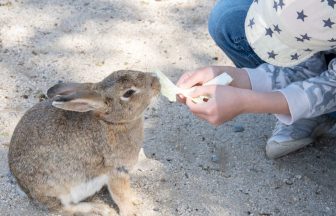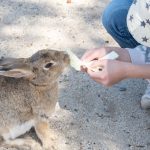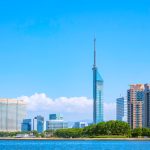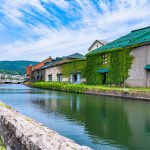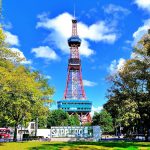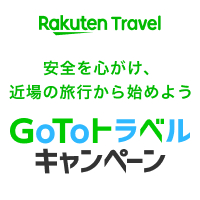Takehara City in Hiroshima Prefecture is located in the central coastal area of Hiroshima, featuring a pleasant climate and abundant nature with a relaxed atmosphere. Tourist spots like the ‘Takehara Townscape Conservation Area’ and ‘Okunoshima Island’ are popular, and the area is bustling with many tourists on holidays!
The flow of time feels slower here compared to the city, making it perfect for a refreshing getaway. There are many nostalgic buildings and atmospheres in Takehara City. This time, we will introduce places where you can enjoy the nostalgia of food and buildings, the history of Takehara, and restaurants serving the local Wagyu beef, ‘Togeshita Beef’ from Takehara City!
First, we have summarized the ways to access Takehara City.
目次
- 1 Access to Takehara City
- 2 Nostalgic Dining Establishments
- 3 Showa Era Film ‘The Girl Who Leapt Through Time’ Shooting Location: Takehara Townscape Conservation Area
- 4 Replenish Your Stamina with Togeshita Beef from Takehara after a Long Walk in the Townscape Conservation Area!
- 5 For a 2 Days 1 Night Trip, the Ryokan ‘Kamogawa-so’ is Recommended!
- 6 Soothe Your Daily Fatigue in Takehara City
Access to Takehara City
There are two ways to access Takehara City: by plane and Shinkansen/JR.
About Access by Plane
When accessing Takehara City by plane, you use Hiroshima Airport. From Hiroshima Airport to Takehara Station, a limousine bus (Anzen Taxi) operates, with a journey time of about 35 minutes to Takehara Station. Hiroshima Airport is served by ANA, JAL, and the LCC Spring Airlines, offering access from all over Japan, from Hokkaido in the north to Okinawa in the south. The flight time from Tokyo is approximately 2 hours.
Access by Shinkansen or JR
To access by Shinkansen, use Mihara Station, where the Sanyo Shinkansen stops. It takes about 1 hour to reach Takehara Station from Mihara Station using the Kure Line.
Additionally, you can take the express bus ‘Kaguyahime-go’ from Hiroshima Station, which will take you directly to the Takehara Station bus stop in about 1 hour. The travel time to Mihara Station and Hiroshima Station is about 4 hours from Tokyo, about 2 and a half hours from Nagoya, and about 2 hours from Osaka.
Depending on your travel budget and time allocation, the method of access may vary, so please be sure to check the access methods regularly!
Nostalgic Dining Establishments
There are many long-established, traditional shops in Takehara City, Hiroshima Prefecture! We will introduce to you a selection of these shops that are sure to give you a nostalgic feeling.
Coffee Shop: Sea Breeze
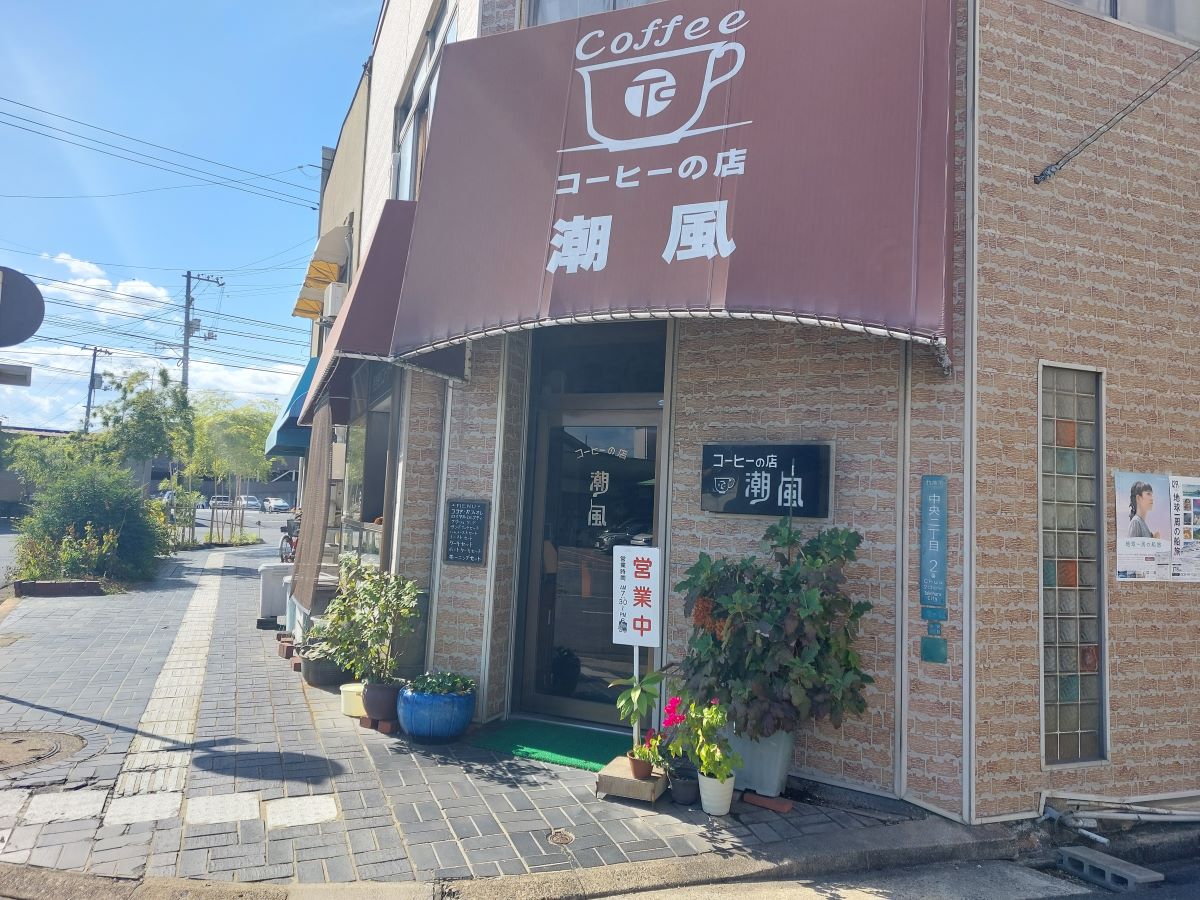
The interior, which has the aroma of the Showa era, is spacious, consisting of the first floor, a semi-basement, and the second floor. They have a morning menu here, which includes toast, salad, and a boiled egg, all for just 600 yen including tax!
A drink is also included. There are menus that let you enjoy the atmosphere of the café, and the hotcake set is recommended!
Every menu item offers the authentic experience of a traditional Japanese café, and the interior is so nostalgic and full of flavor that you might feel as though you’ve time-slipped back to the Showa era!
Address: 2-2-1 Chuo, Takehara City, Hiroshima Prefecture
Business hours: 7:30 AM to 6:00 PM
Closed: 2nd and 4th Thursday of each month (subject to confirmation)
Handmade Sandwiches: Seto
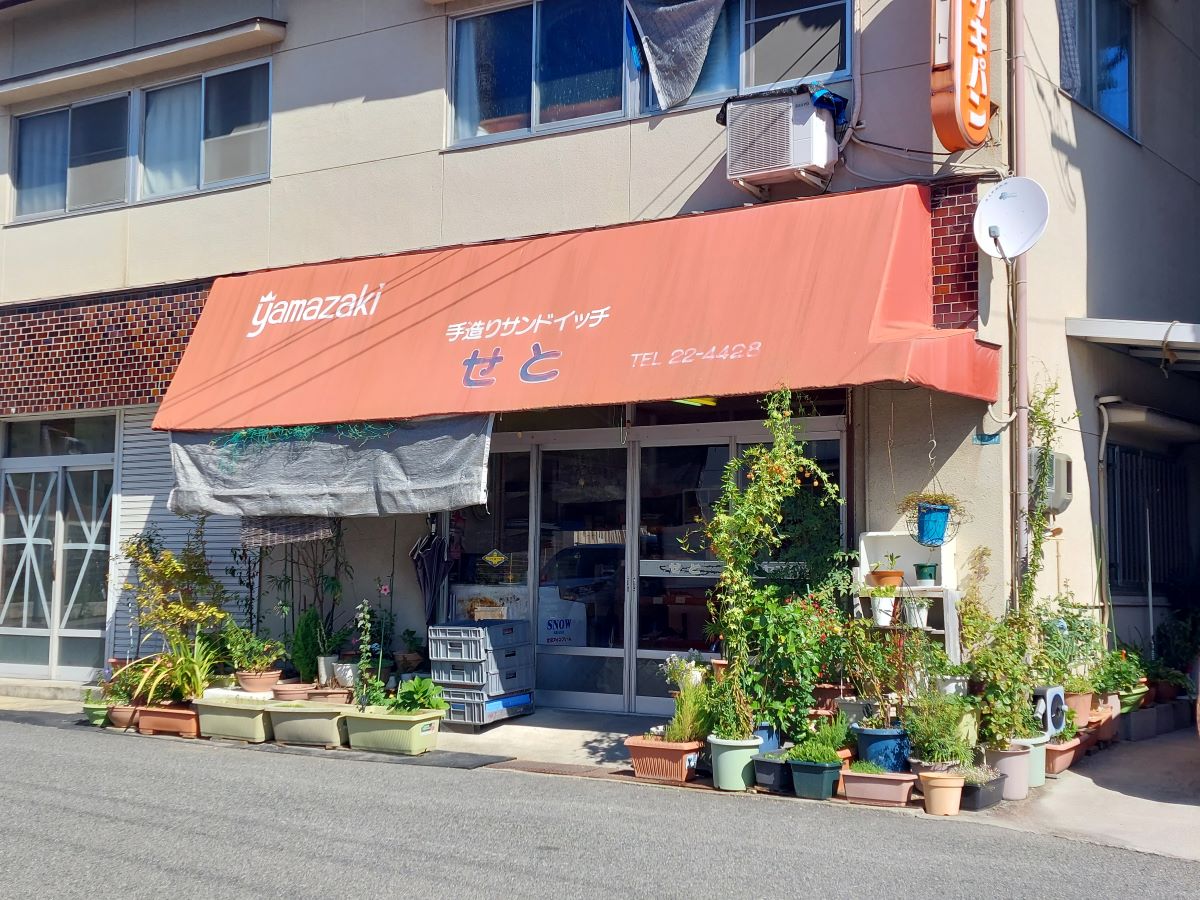 his is another shop beloved by the locals, a sandwich shop. The robust seasoning with mayonnaise, yet with a gentle taste, might make you feel nostalgic!
his is another shop beloved by the locals, a sandwich shop. The robust seasoning with mayonnaise, yet with a gentle taste, might make you feel nostalgic!
As many items often sell out before noon due to popularity, it’s better to go around opening time for a wider selection.
Everything is handmade, so unlike convenience stores, this shop offers a charming, homemade and rustic flavor!
Address: 5-7-17 Chuo, Takehara City, Hiroshima Prefecture
Business hours: 5:00 AM to 2:00 PM
Closed: Tuesday to Thursday (subject to confirmation)
Showa Era Film ‘The Girl Who Leapt Through Time’ Shooting Location: Takehara Townscape Conservation Area
The Takehara Townscape Conservation Area was used as a filming location for the 1983 movie ‘The Girl Who Leapt Through Time’.
The Takehara Townscape Conservation Area is a spot where you can enjoy historic buildings and feel a strong sense of nostalgia.
This time, we will introduce the history of the Takehara Townscape Conservation Area along with the filming locations of ‘The Girl Who Leapt Through Time’!
Okonomiyaki: Horikawa
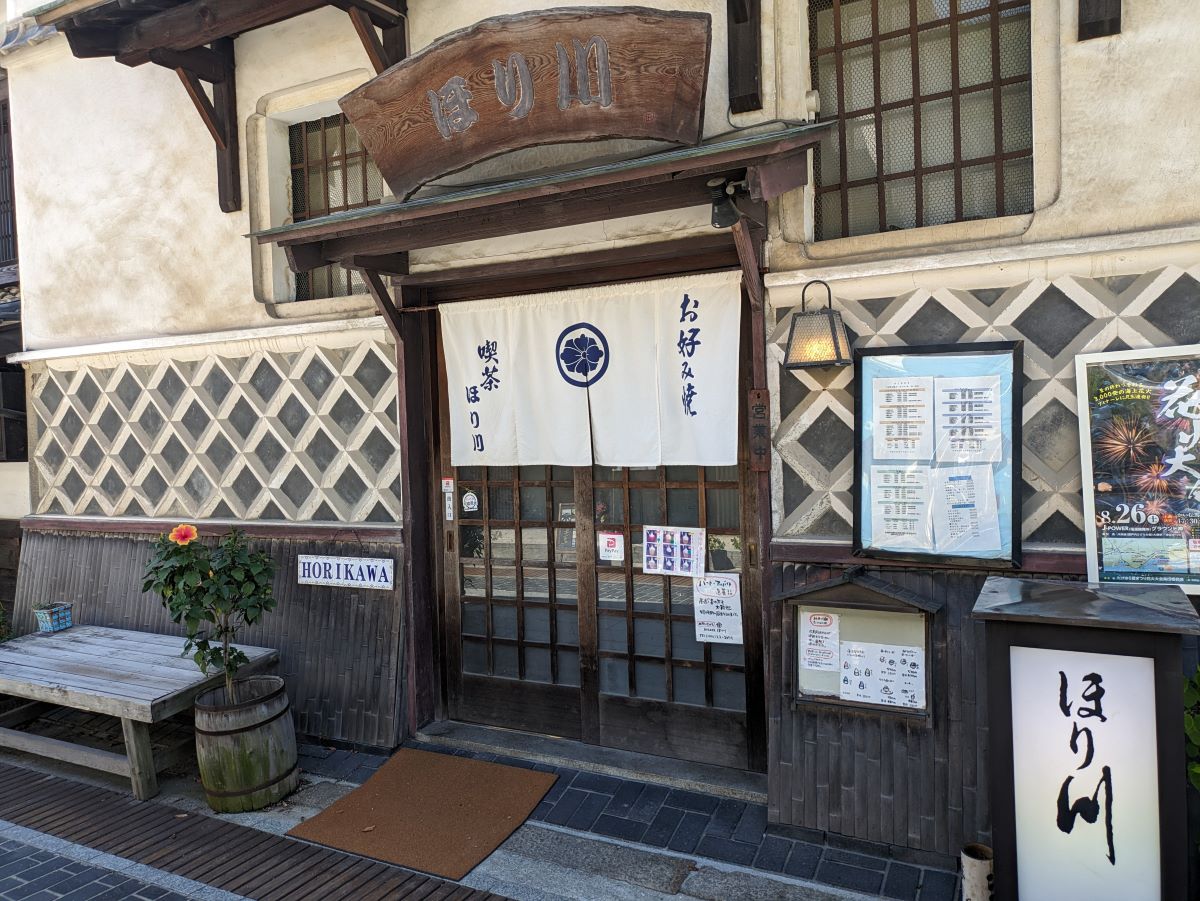
During the filming, the director took a liking to the Hori River residence at the time, and it is said that he changed the surname of the character played by Toshinori Omi to ‘Hori River’. This change was handwritten in the script at the time and is preserved at ‘Hori River’.
It seems that the director, staff, and cast used the shop as a rest area during breaks in filming. The signboard, which was a prop gifted after the filming, has since been replaced as the original was damaged, but the second generation signboard is displayed, retaining the original design!
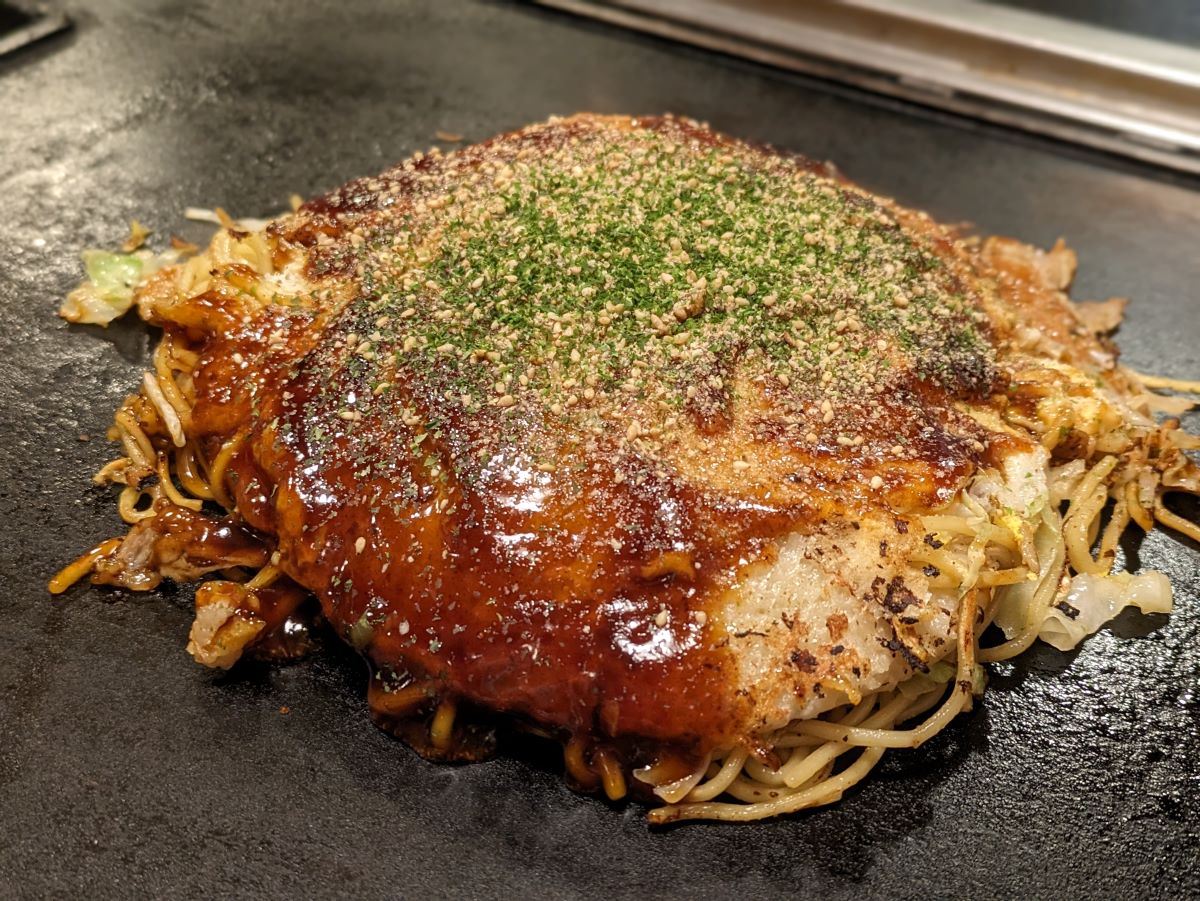 The signature product is ‘Takehara-yaki’, a Hiroshima-style okonomiyaki made by kneading sake lees into the batter! With just one bite, you can enjoy a unique okonomiyaki experience with a gentle aroma of sake unlike any other.
The signature product is ‘Takehara-yaki’, a Hiroshima-style okonomiyaki made by kneading sake lees into the batter! With just one bite, you can enjoy a unique okonomiyaki experience with a gentle aroma of sake unlike any other.
Since they use homemade soy sauce, be sure to visit the shop.
Address: 3-8-21 Honmachi, Takehara City, Hiroshima Prefecture
Business hours: 11:00 AM to 2:00 PM (Last Order 1:30 PM) / 5:00 PM to 7:00 PM (Last Order 6:30 PM)
Closed: Wednesday
Saihouji Temple
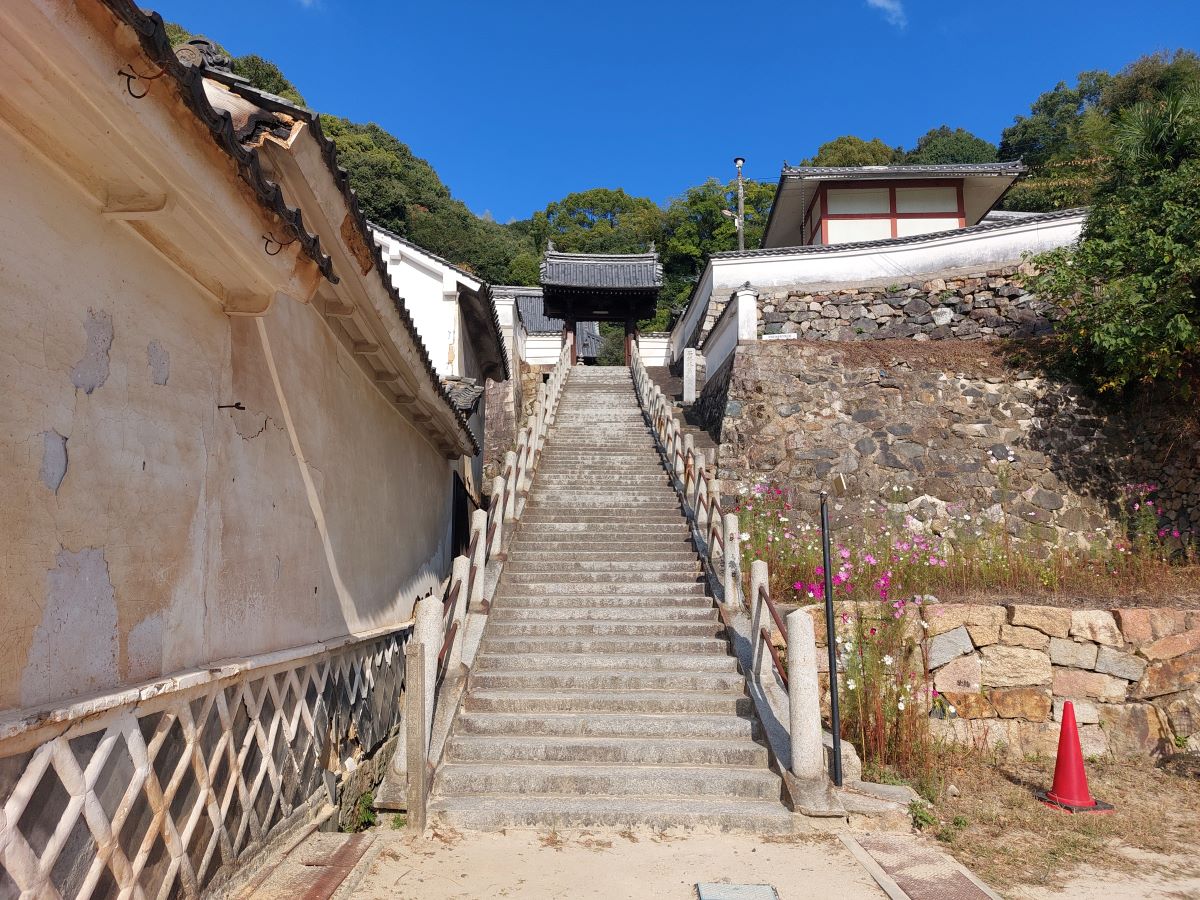 This is a very long staircase with a steep slope! In the movie, the protagonist, played by Tomoyo Harada, was running down these stairs! The origin of Saihouji Temple dates back to the early Edo period, when it was founded as a Zen temple (Myouhouji). It was destroyed by fire in 1602, and in the following year, it was relocated to its current location and converted to the Pure Land sect.
This is a very long staircase with a steep slope! In the movie, the protagonist, played by Tomoyo Harada, was running down these stairs! The origin of Saihouji Temple dates back to the early Edo period, when it was founded as a Zen temple (Myouhouji). It was destroyed by fire in 1602, and in the following year, it was relocated to its current location and converted to the Pure Land sect.
The main hall was rebuilt in the 15th year of Genroku (1702), and the Kannon Hall (Fumei-kaku) was built in the 2nd year of Meiwa (1765), both of which are designated as important cultural properties of Hiroshima Prefecture.
The historical background of Saifouji Temple includes its prosperity under the protection of the lord of Takehara Domain during the Edo period. Also, in the Meiji era, it was known as a temple that contributed to the formation of the Takehara Townscape Conservation Area.
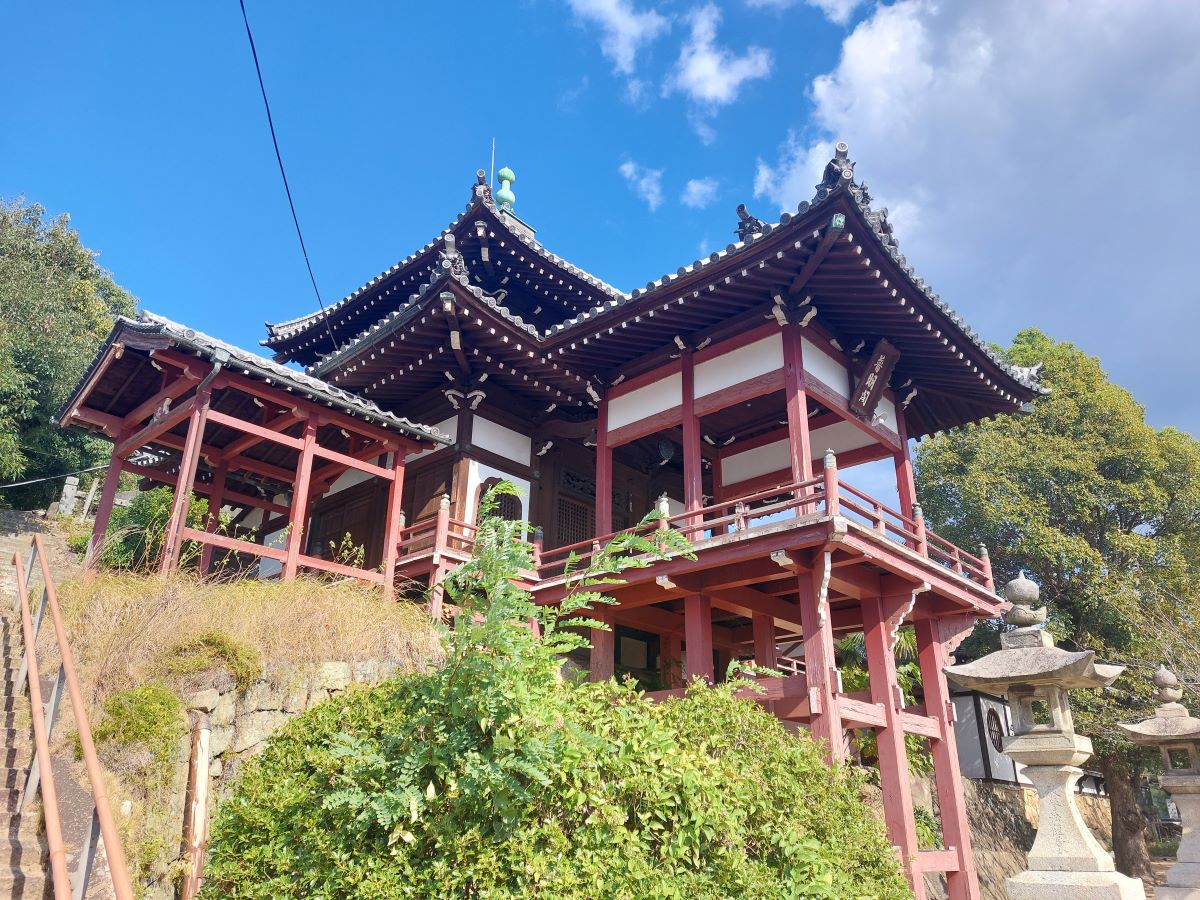 From the Fumei-kaku, you can overlook the town of Takehara, making it an important building that stands at the heart of the Townscape Conservation Area’s scenery. The main deity of Myouhouji Temple, a wooden statue of the Eleven-Faced Kannon (designated as a prefectural important cultural property), is enshrined here. It’s a bit dark inside, so it might be difficult to take photos, but you can see it with your eyes!
From the Fumei-kaku, you can overlook the town of Takehara, making it an important building that stands at the heart of the Townscape Conservation Area’s scenery. The main deity of Myouhouji Temple, a wooden statue of the Eleven-Faced Kannon (designated as a prefectural important cultural property), is enshrined here. It’s a bit dark inside, so it might be difficult to take photos, but you can see it with your eyes!
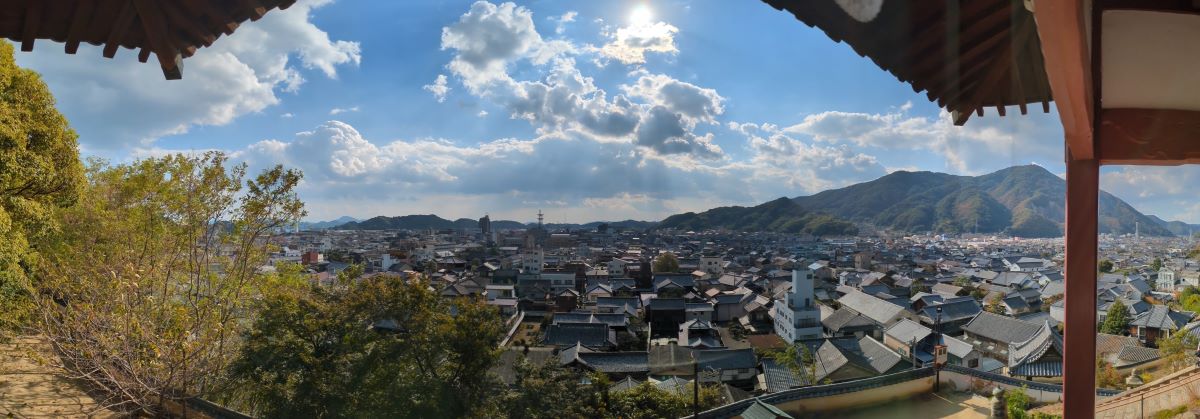 How about enjoying the view, taking a stroll around the temple grounds, and experiencing the history and culture of Takehara? The sunset is very beautiful, so you might be able to capture some emotional photos!
How about enjoying the view, taking a stroll around the temple grounds, and experiencing the history and culture of Takehara? The sunset is very beautiful, so you might be able to capture some emotional photos!
Ebisudou Hall
In the movie, the protagonist, a young girl who time-slips to a different era, visits the Ebisudou.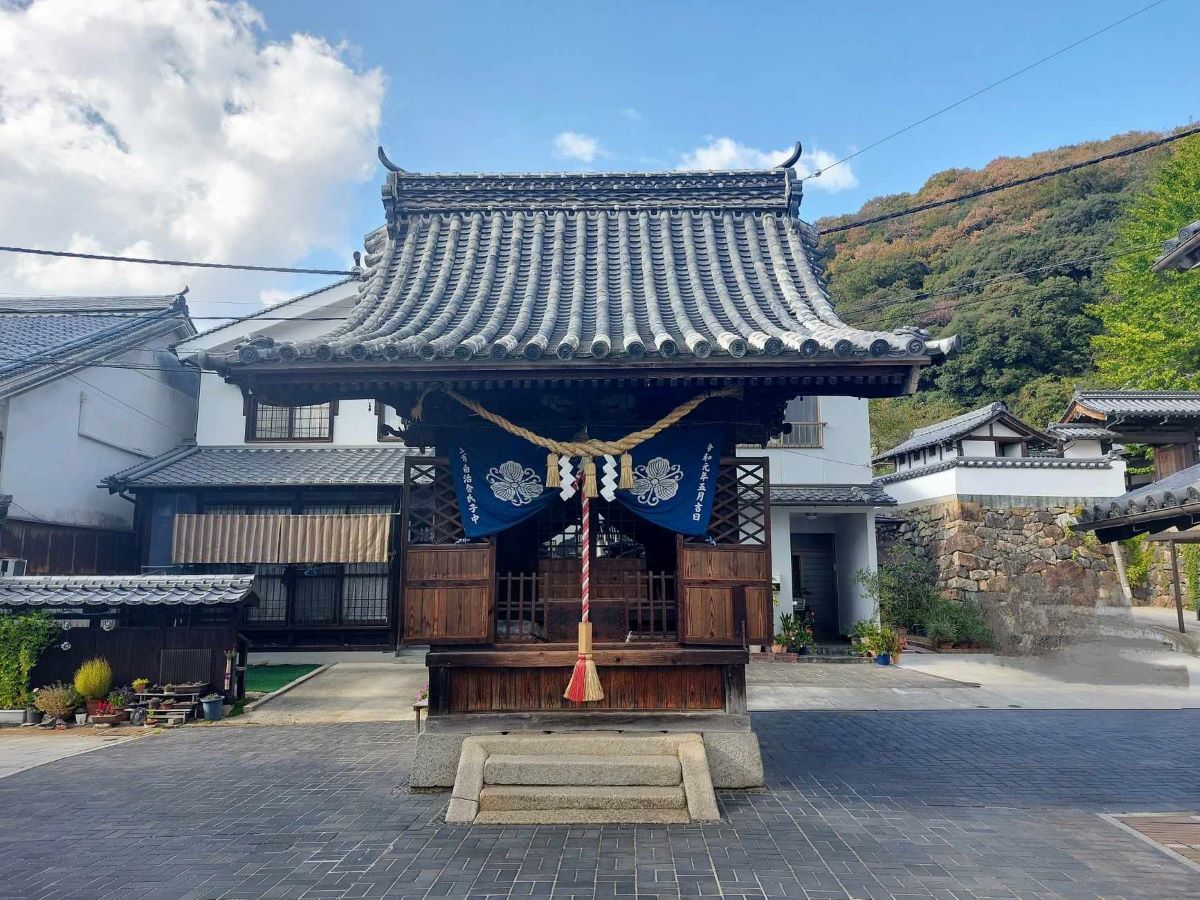 Ebisudou enshrines Ebisu, the god of business prosperity, and is beloved by locals as a symbol of the Takehara Townscape Conservation Area! The history of Ebisudou dates back to the early Edo period. At that time, Takehara prospered in the salt-making industry, attracting many merchants. These merchants built a small shrine to worship Ebisu in hopes of business prosperity.
Ebisudou enshrines Ebisu, the god of business prosperity, and is beloved by locals as a symbol of the Takehara Townscape Conservation Area! The history of Ebisudou dates back to the early Edo period. At that time, Takehara prospered in the salt-making industry, attracting many merchants. These merchants built a small shrine to worship Ebisu in hopes of business prosperity.
In the Meiji era, Ebisudou was relocated to its current location, and a single-room shrine in the Nagare-zukuri style was constructed. Additionally, a Korean bell, said to have been brought back by Takakawa Takayoshi from Korea during the Bunroku and Keicho campaigns and designated as a national important cultural property, was enshrined.
Ebisudou has gathered the faith of merchants and contributed to the development of the Takehara Townscape Conservation Area! Even today, a festival wishing for the prosperity of commerce is held every October, bringing liveliness as a town tradition. Ebisudou is a spot where you can feel the history and culture of Takehara City. When visiting Takehara, be sure to stop by!
Replenish Your Stamina with Togeshita Beef from Takehara after a Long Walk in the Townscape Conservation Area!
Togeshita beef is a brand of beef raised in the Togeshita district of Takehara City. Raised amidst the rich natural environment, Togeshita beef is characterized by its fine marbling and red meat. Also, in recent years, only female cattle are shipped, making its robust sweetness a significant feature.
Now, let’s introduce some restaurants in Takehara City where you can enjoy Togeshita beef!
Lamp Restaurant
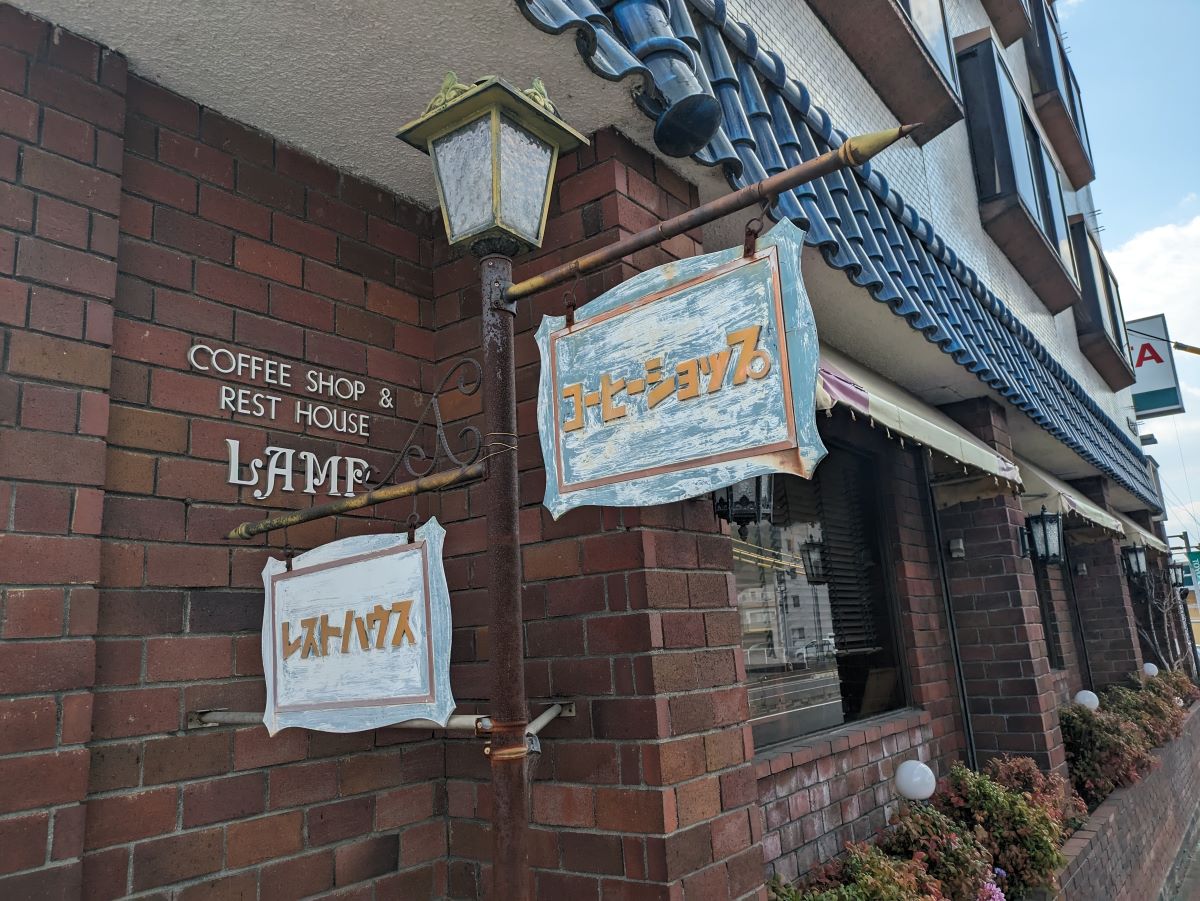
This restaurant is located in the central part of Takehara City. The interior has a calm atmosphere with plenty of table seating for a relaxed experience! At Lamp Restaurant, you can enjoy as many as six different dishes made with Togeshita beef! There are four types of steaks, sukiyaki, and shabu-shabu menus.
It’s hard to decide what to eat with different types of steak available. Interestingly, the most popular local menu item is actually tonkatsu, so if you’re curious, give it a try as well!
Address: 4-8-1 Chuo, Takehara City, Hiroshima Prefecture
Business hours: 11:00 AM to 2:00 PM / 5:00 PM to 8:30 PM (subject to confirmation)
Closed: Monday (irregular holidays)
Trattoria M
You can enjoy Togeshita beef Bolognese and Togeshita beef steak here.
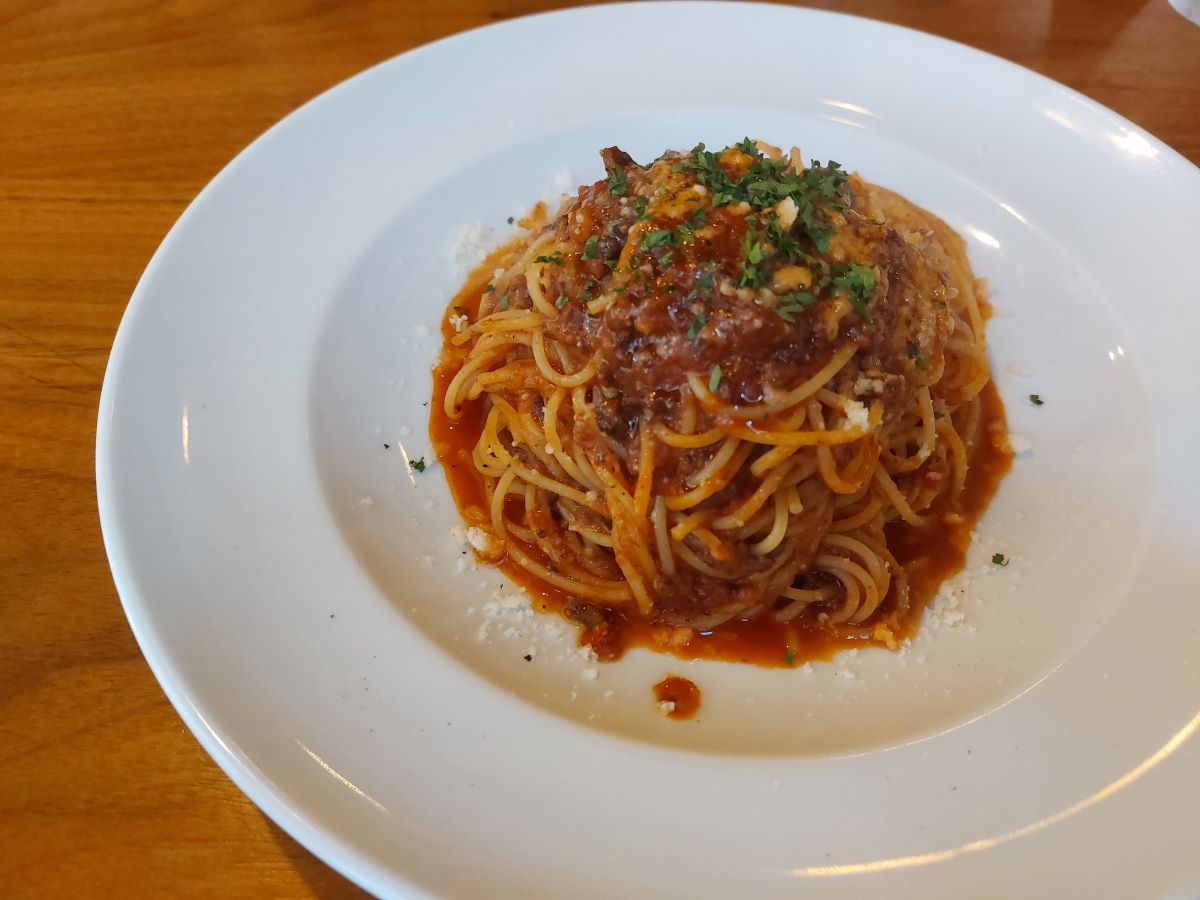 In addition, there is a wide selection of dishes using local ingredients, local sake, craft beer, and wine, so please try these as well! The atmosphere inside the restaurant is stylish, and there’s a counter, making it a comfortable spot for solo diners as well.
In addition, there is a wide selection of dishes using local ingredients, local sake, craft beer, and wine, so please try these as well! The atmosphere inside the restaurant is stylish, and there’s a counter, making it a comfortable spot for solo diners as well.
You are sure to have a special time here!
Address: 4-6-5 Honmachi, Takehara City, Hiroshima Prefecture
Business Days: Lunch on Tuesday, Thursday, and Saturday (please confirm) 11:30 AM – 3:00 PM (Last Order 2:30 PM)
Dinner 5:30 PM – 10:00 PM (Last Order 9:00 PM)
Closed: Sunday (Open on Sundays if Monday is a holiday, closed on Monday instead)
For a 2 Days 1 Night Trip, the Ryokan ‘Kamogawa-so’ is Recommended!
If you’re staying in Takehara City, ‘Kamogawa-so’ is undoubtedly the place to be. Even before reaching the main building, the nostalgic buildings in the vicinity give a sense of time-slipping!
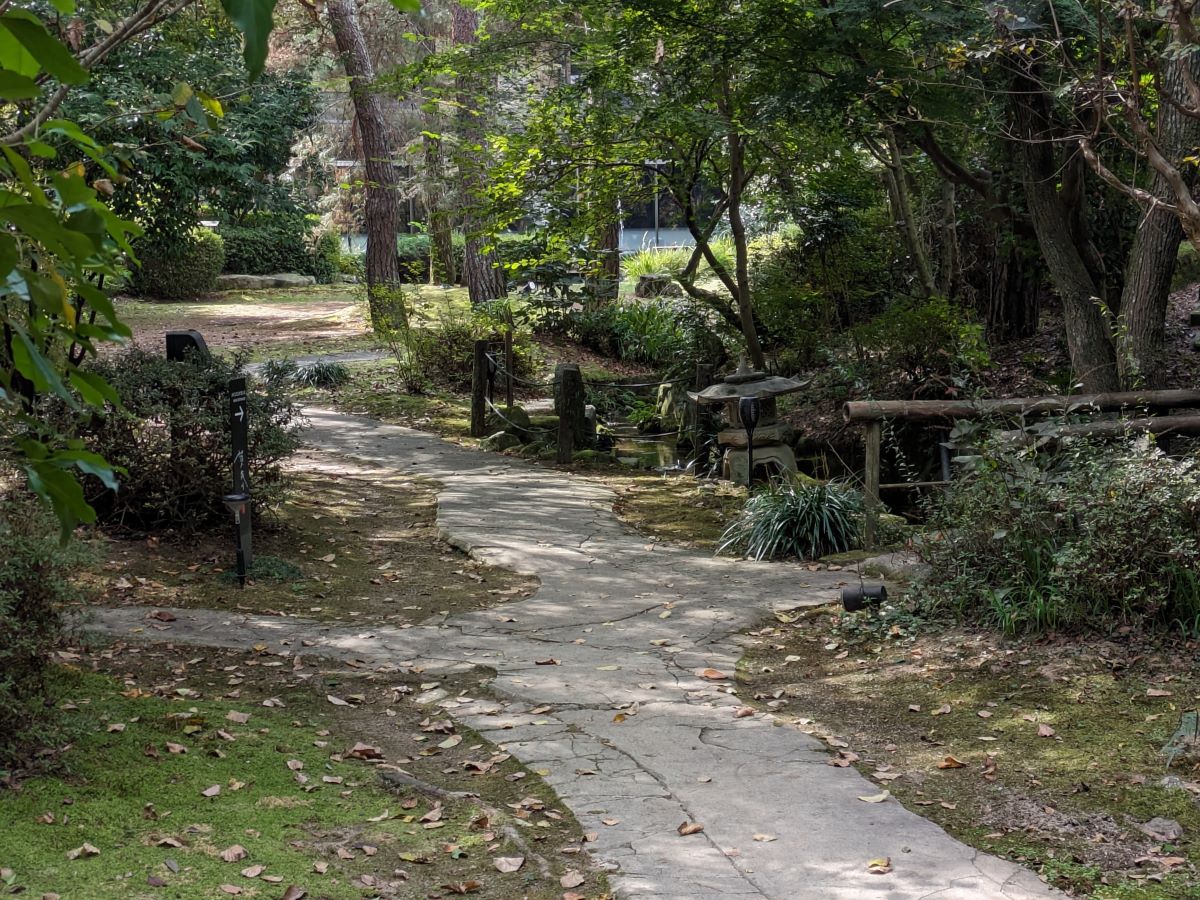 The hot spring at Kamogawa-so is from ‘Yuzaka Onsen’ and features a flowing source spring.
The hot spring at Kamogawa-so is from ‘Yuzaka Onsen’ and features a flowing source spring.
The location of Kamogawa-so is where Sugawara no Michizane, on his way to Tsukushi (Kyushu region), stopped to heal his fatigue in the hot springs, and during the Edo period, it was a resting spot for feudal lords traveling to and from Edo for their alternate-year residencies.
It’s a historically cherished hot spring! They also offer day-use hot spring facilities, so it’s possible to enjoy them even if you’re not staying overnight (though it’s recommended to check in advance).
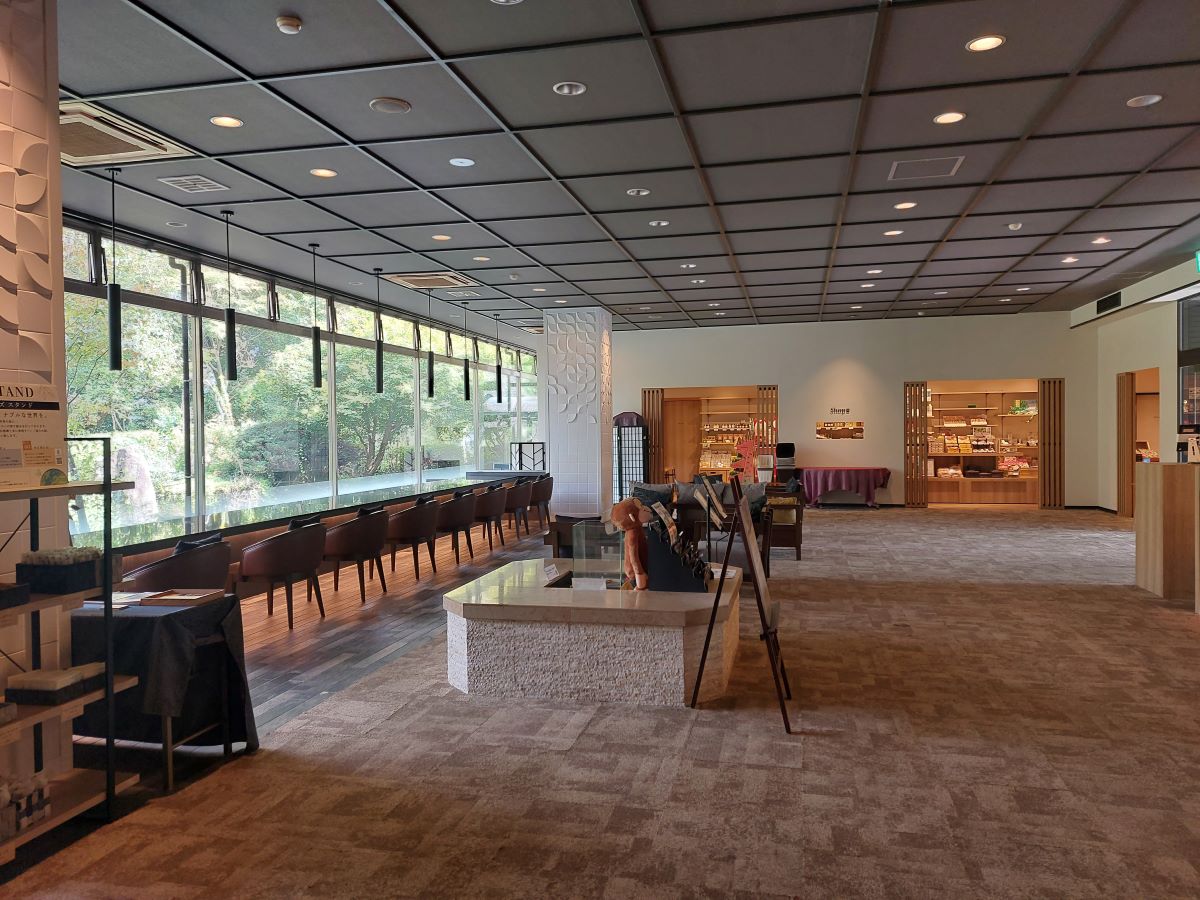 There’s also a Japanese garden, so you can fully immerse yourself in Japanese culture. The lobby has large windows, making it a great spot to relax and take in the view. With high satisfaction among tourists, it’s definitely recommended to stay here at least once!
There’s also a Japanese garden, so you can fully immerse yourself in Japanese culture. The lobby has large windows, making it a great spot to relax and take in the view. With high satisfaction among tourists, it’s definitely recommended to stay here at least once!
Soothe Your Daily Fatigue in Takehara City
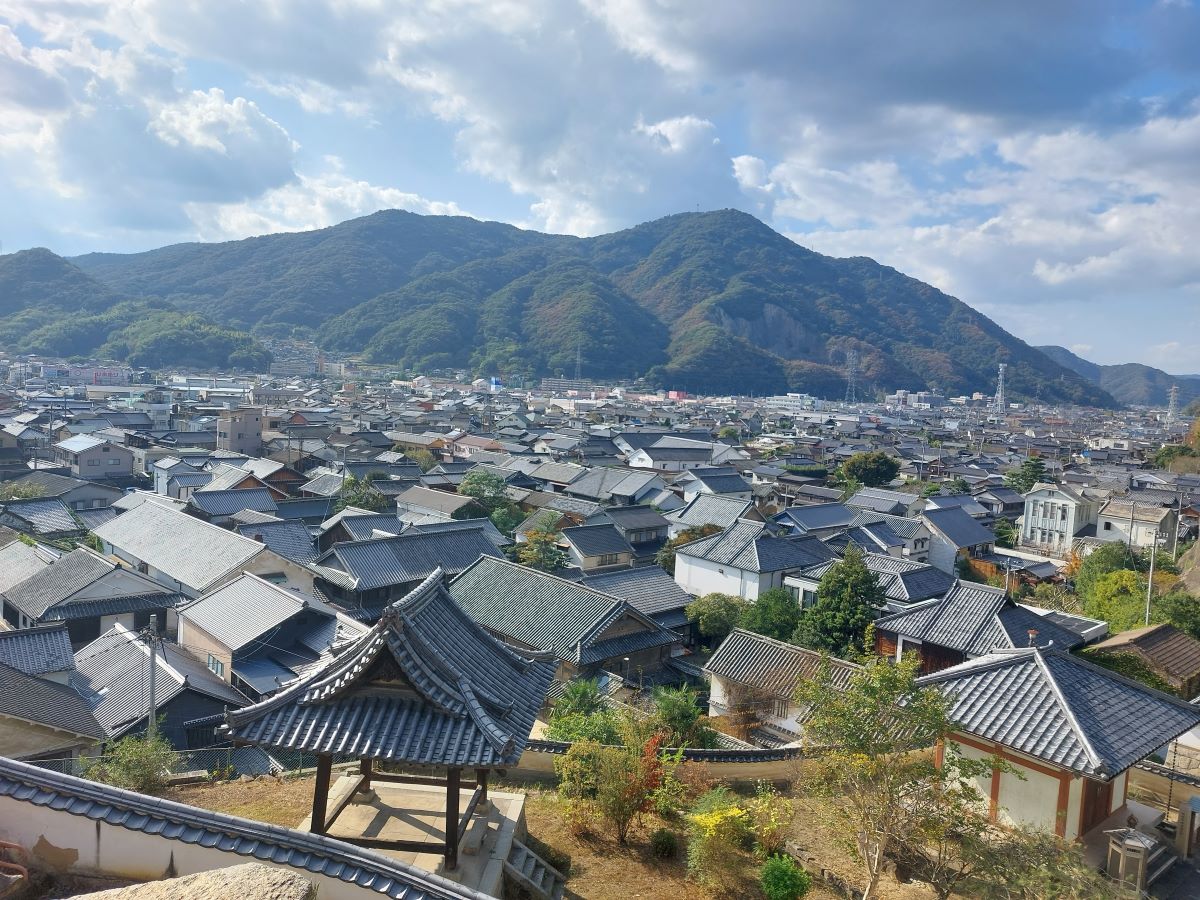 Unlike urban cities, the town of Takehara doesn’t have tall buildings, so you won’t feel any sense of oppression. The sky feels vast, allowing you to spend time in a relaxed manner! If you’re looking to heal the fatigue of daily life in a rural setting, please do come to Takehara City at least once!
Unlike urban cities, the town of Takehara doesn’t have tall buildings, so you won’t feel any sense of oppression. The sky feels vast, allowing you to spend time in a relaxed manner! If you’re looking to heal the fatigue of daily life in a rural setting, please do come to Takehara City at least once!

AVAトラベルの記事は、日本旅行に詳しい様々な地域のライターによって執筆されています。
The articles on AVA Travel are written by writers from various regions who are knowledgeable about travel in Japan.



